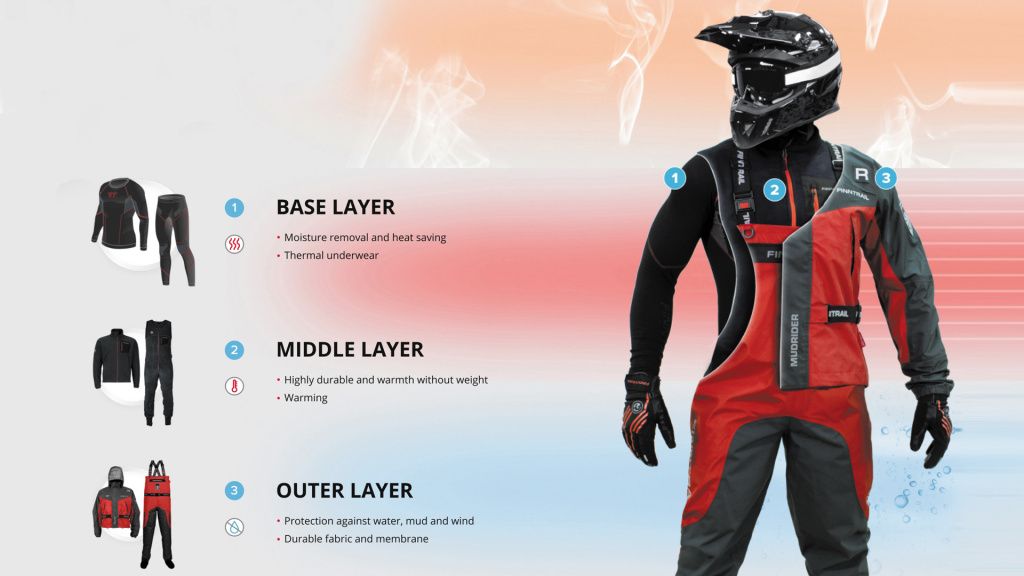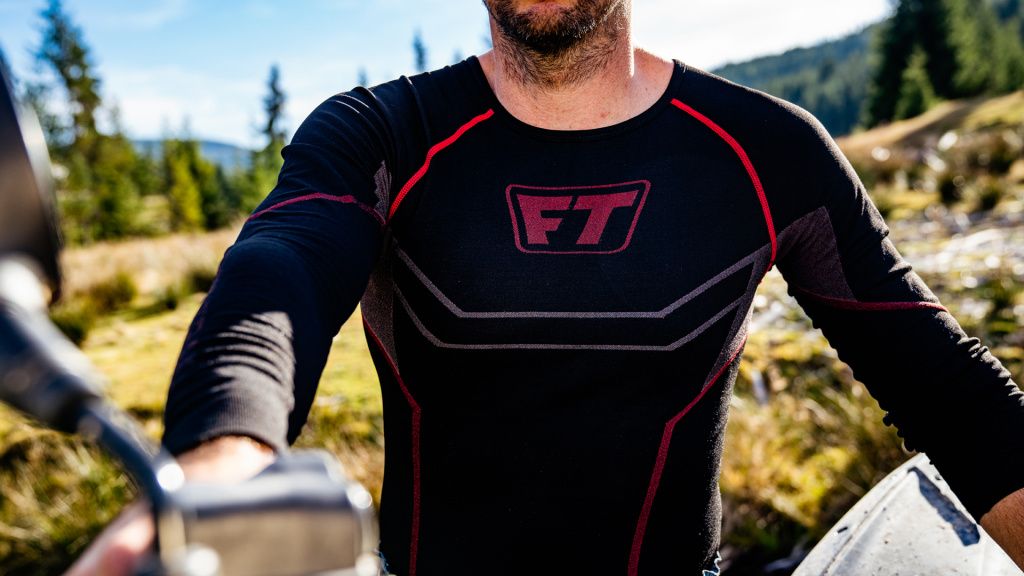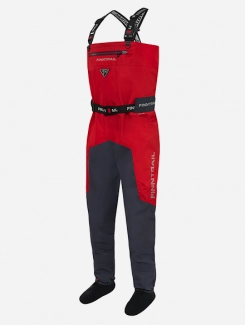The Layering System For Comfortable Off-Road Riding
The cold season is coming. Gone are the days of simply tossing on waders and jackets before hitting the trails. They are great to protect you against water, mud, and wind but obviously not enough to keep you warm in the near-freezing and sub-zero temperatures.
So, what to do? No, you don’t need to put on all the bulky clothing you have! The key secret is to follow the proven strategy of layering up
WHAT IS THE LAYERING SYSTEM?

The layering system is a combination of proper clothing which regulates your body temperature and comfort, whatever the weather is. Each layer has a different job to do, but combined together these layers work as the single design that wicks moisture, retains heat and protects you against natural factors.
The main idea of the layering system is to trap air in between each layer, insulating you fr om the cold. This is the reason why a few thin layers actually keep you warmer than a thick one. Depending on the conditions and the level of your activity, you may slip the layers on and off, and this is the most effective way to warm up or cool down.
WHAT ARE THE BENEFITS OF THE LAYERING SYSTEM?

The main idea of the layering system is to trap air in between each layer, insulating you from the cold. This is the reason why a few thin layers actually keep you warmer than a thick one. Depending on the conditions and the level of your activity, you may slip the layers on and off, and this is the most effective way to warm up or cool down.
HOW TO LAYER UP FOR OFF-ROAD RIDING?

1. THE BASE LAYER: MOISTURE MANAGEMENT
FUNCTION
As the name suggests, this is the next-to-skin layer. Its main function is to wick perspiration off your skin and move it toward the surface of the fabric wh ere it can easily evaporate. In cold and freezing conditions, the need to stay dry under your riding gear is exceptionally important, since it helps you keep warm when you slow down or stop for a rest.
FABRICS
Avoid wearing cotton garments as they absorb and retain moisture which can quickly make you feel chilled. You have a wide range of suitable fabric options, including synthetics like polyester or natural fibers like merino wool. Since they absorb very little water and dry quickly, they are much more reliable for mud riding and other outdoor activities.
FEATURES
Choose a type and thickness of fabric, based on how low the temperature is and how active you plan to be.
Look for flat-seamed or seamless garments that won’t rub against your skin when combined with other riding gear.

2. THE MID-LAYER: INSULATION
FUNCTION
The mid-layer is also called the insulation layer, since it provides your warmth. When used over the base layer under the waders and jacket, the mid-layer traps and retains your body heat and keeps cold air away.
FABRICS
Again, don’t pick cotton items. When choosing a mid-layer for high intensity outdoor activity such as ATV riding, a rule of thumb is to opt for breathable and fast-drying materials. This allows moisture and excess heat to pass through the layer easily. The go-to mid-layer materials are fleece, softshell or any other synthetic fibres featuring an excellent warmth-to-weight ratio.
FEATURES
Focus on your region's climate features. In general, the thicker the fabric, the warmer the garment, though the efficiency of the insulating material is also important. Make sure that the level of warmth suits your activity and weather conditions.
3. THE OUTER LAYER: WEATHER PROTECTION

FUNCTION
Another name for the outer layer is the shell layer. This is your main shield against natural elements such as rain, wind, mud, and debris. A waterproof set of waders and a jacket is your best option for full-on squall weather conditions. It’s important that this layer is still breathable and allows the moisture from your base layers to escape.
FABRICS
So, look for advanced fabrics with a high-performance membrane. Depending on the climate and terrain, you might want the shell layer to be insulated. When riding at freezing temperatures, consider wearing an insulated monosuit.
FEATURES
Other key features to look out for include taped seams, waterproof zips, abrasion- and mud-resistant coatings to ensure the layer keeps the water out.
Make sure that your shell layer fits easily over your base and mid- layers. It should be neither too loose, nor tight in order to allow you to move freely with all the warmth kept inside.

This is the tried-and-true strategy of layering up. All layers do a different job but work together to ensure you’re comfortable, warm and not restricted. Layer up and have fun!










